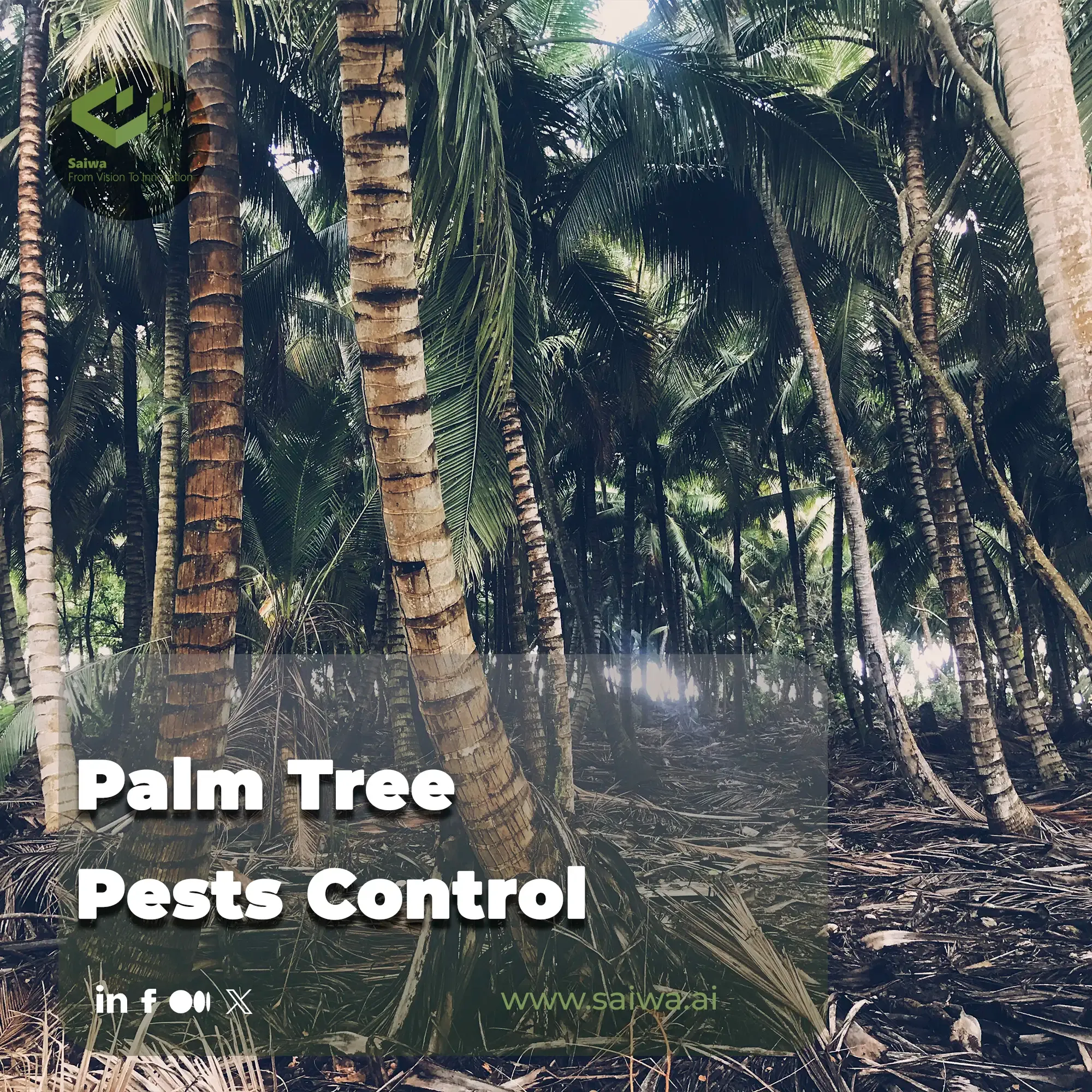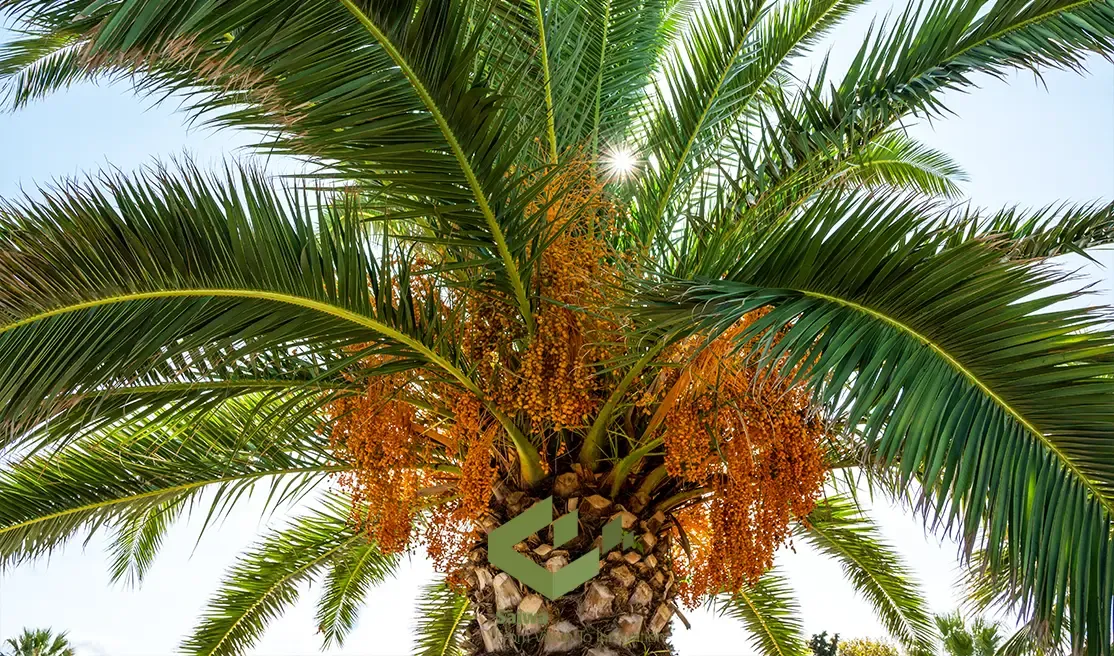Palm Tree Pests Control - Innovations in Monitoring and Mitigation

Importance of Palm Tree Health
The structural and aesthetic value of palm trees makes their health a critical asset in agricultural and landscape settings, where the cost of replacing a mature specimen can be substantial. Protecting these assets goes beyond simple observation; it requires a sophisticated understanding of threats, particularly from invasive species. Invasive Plant Identification Matters because early, accurate detection is the foundation of any effective defense.
Addressing this challenge, Saiwa introduces advanced, AI-driven solutions. This article explores the evolution from traditional pest identification to cutting-edge technological monitoring and mitigation strategies.
Most Common Palm Tree Pests
An effective Palm Tree Pests Control strategy is rooted in the precise identification of the aggressor. Each pest leaves a unique signature of damage, and understanding these is the first step toward targeted intervention. Among the most common threats that specialists and property owners regularly encounter, several stand out for their potential to cause widespread damage, as detailed below:
Mealybugs: Appear as white, cotton-like masses, feeding on plant sap.
Palm Aphids: Tiny insects that leave a sticky residue (honeydew), attracting sooty mold.
Scale Insects: Form hard, shell-like bumps on fronds, draining vital fluids.
Spider Mites: Create fine webbing and cause a stippled, yellowish appearance on leaves.
Red Palm Weevils: Larvae tunnel lethally through the core of the palm trunk.
Royal Palm Bug: Causes distinct, scorched-brown damage on newly emerging fronds.

Traditional Methods for Palm Tree Pest Control
Historically, the response to these threats has relied on a toolkit of direct interventions. While valuable, these methods often struggle with scalability and early detection, typically being employed after an infestation is already visible. The primary approaches have long included a combination of the following practices:
Mechanical Practices: Involves physical removal of pests through high-pressure water sprays, pruning of infested fronds, or manual scraping.
Chemical Treatments: The application of horticultural oils, insecticidal soaps, or synthetic pesticides to eliminate pest populations directly.
Biological Control: The introduction of natural predators or parasites of the pests to establish a more balanced, self-regulating ecosystem.
Advanced and Technological Pest Control Methods
The limitations of traditional methods, especially in early detection, have catalyzed a shift toward technology-driven approaches. These innovations offer unprecedented precision and foresight.
Remote Sensing and UAV Monitoring
The deployment of Unmanned Aerial Vehicles (UAVs) equipped with advanced sensors has revolutionized large-scale Plant Health Monitoring. Multispectral and thermal cameras can capture data invisible to the human eye, identifying plant stress from pests or disease before visual symptoms like discoloration appear.
Machine Learning and AI Integration
This is where raw data becomes intelligent insight. Machine learning algorithms, particularly deep learning models, analyze UAV imagery to perform anomaly detection, distinguishing healthy palm canopies from those showing subtle signs of stress. This automated analysis pinpoints problem areas with surgical accuracy.
IoT-Based Acoustic Monitoring
An emerging frontier in detection involves deploying IoT-based sensors that can acoustically detect the chewing sounds of boring larvae, such as the Red Palm Weevil, from within the trunk, enabling intervention at the earliest possible stage.
Palm Tree Pest Control in Action: Technology at Work
Canary Islands, UAV Monitoring of Date Palms
Researchers used drones equipped with multispectral sensors to monitor date palm groves. Machine learning algorithms analyzed the imagery to identify trees infected by pests like Serenomyces phoenicis and Phoenicococcus marlatti, allowing for early detection and targeted interventions.
Andhra Pradesh, India, AI-Powered Palm Mapping
They applied satellite imagery and AI to map 2.6 million oil palm trees across 15,743.5 hectares. The system provided precise tree counts and health assessments, enabling efficient pest management and optimized resource allocation across large-scale plantations.

From Detection to Action: How Sairone Streamlines Pest Management
While advanced detection is powerful, its true value is realized when it guides immediate, effective action. This is the core function of Saiwa’s Sairone platform. Sairone automates the entire workflow by processing high-resolution drone imagery and applying its sophisticated AI models to identify and map pest infestations or weed encroachment with remarkable precision.
Rather than just providing data, Sairone delivers actionable intelligence, empowering growers to transition from reactive treatments to a proactive and efficient Palm Tree Pests Control program, saving resources and preserving crop health.
Conclusion
The management of palm tree pests is evolving from a reactive, labor-intensive practice into a proactive, data-driven science. By integrating advanced technologies like UAVs, AI, and IoT sensors, we can achieve earlier detection and more targeted treatments. This technological leap not only enhances the efficacy of control measures but also promotes greater sustainability in agricultural and ecological stewardship.
Note: Some visuals on this blog post were generated using AI tools.
